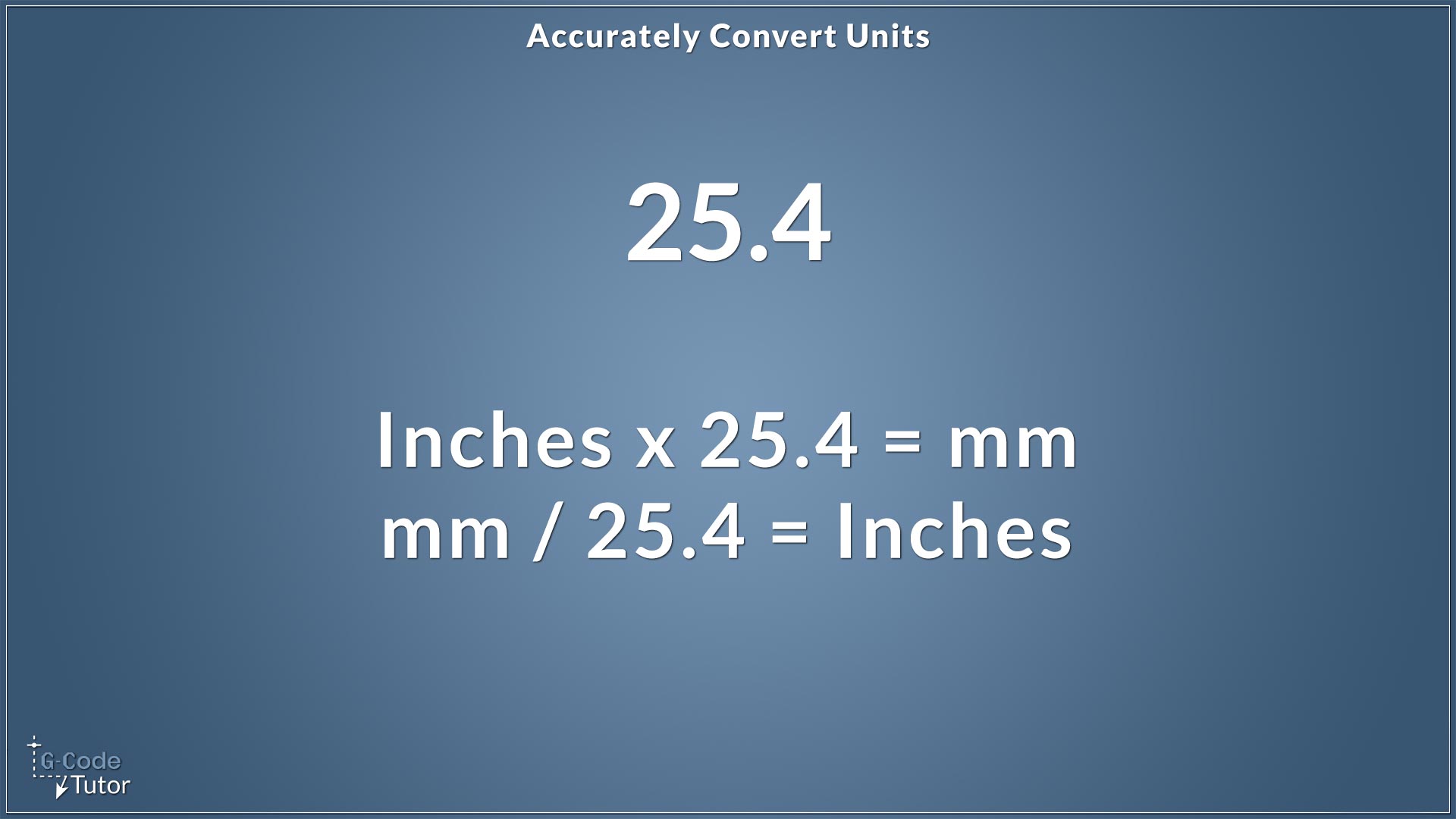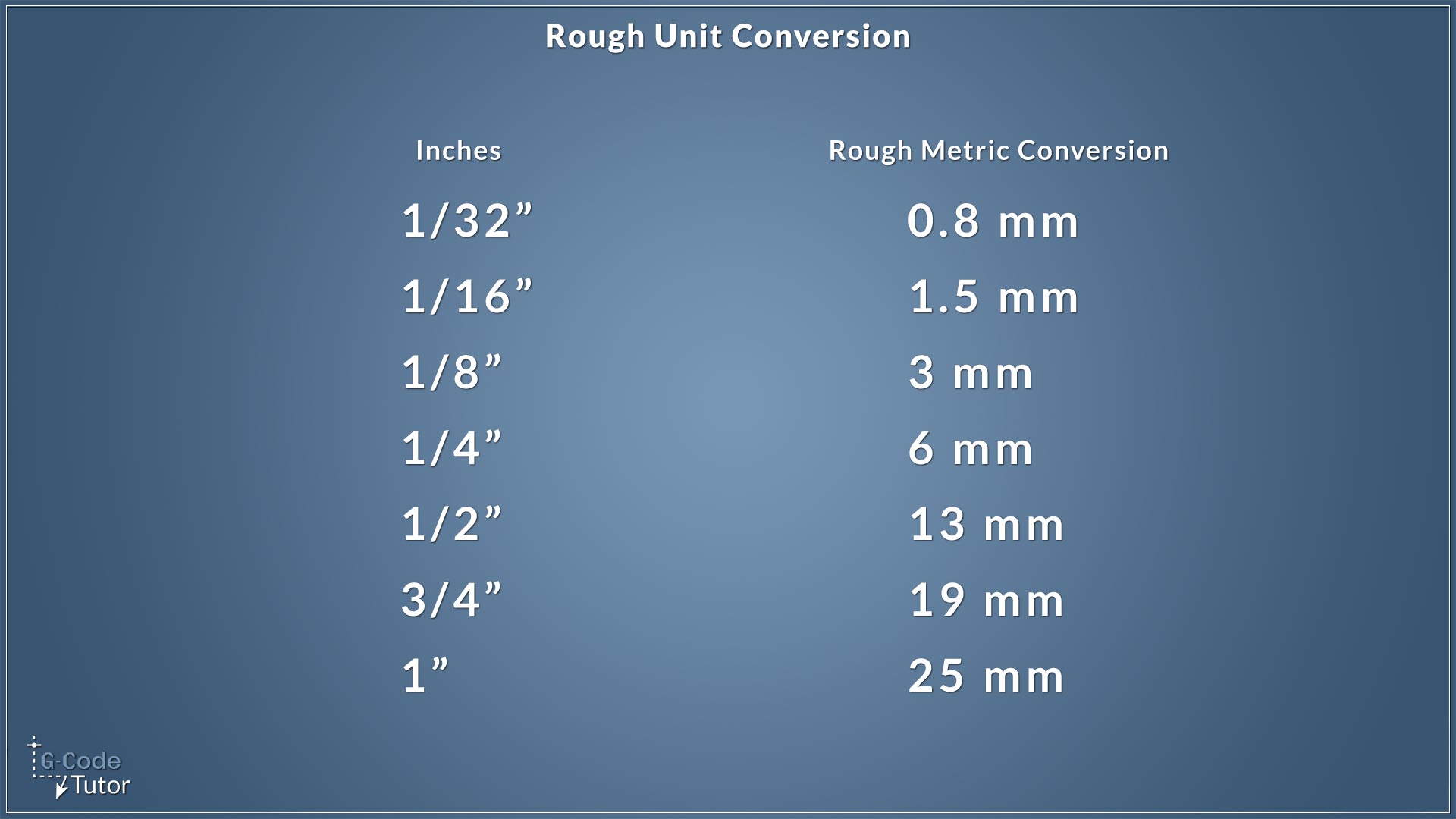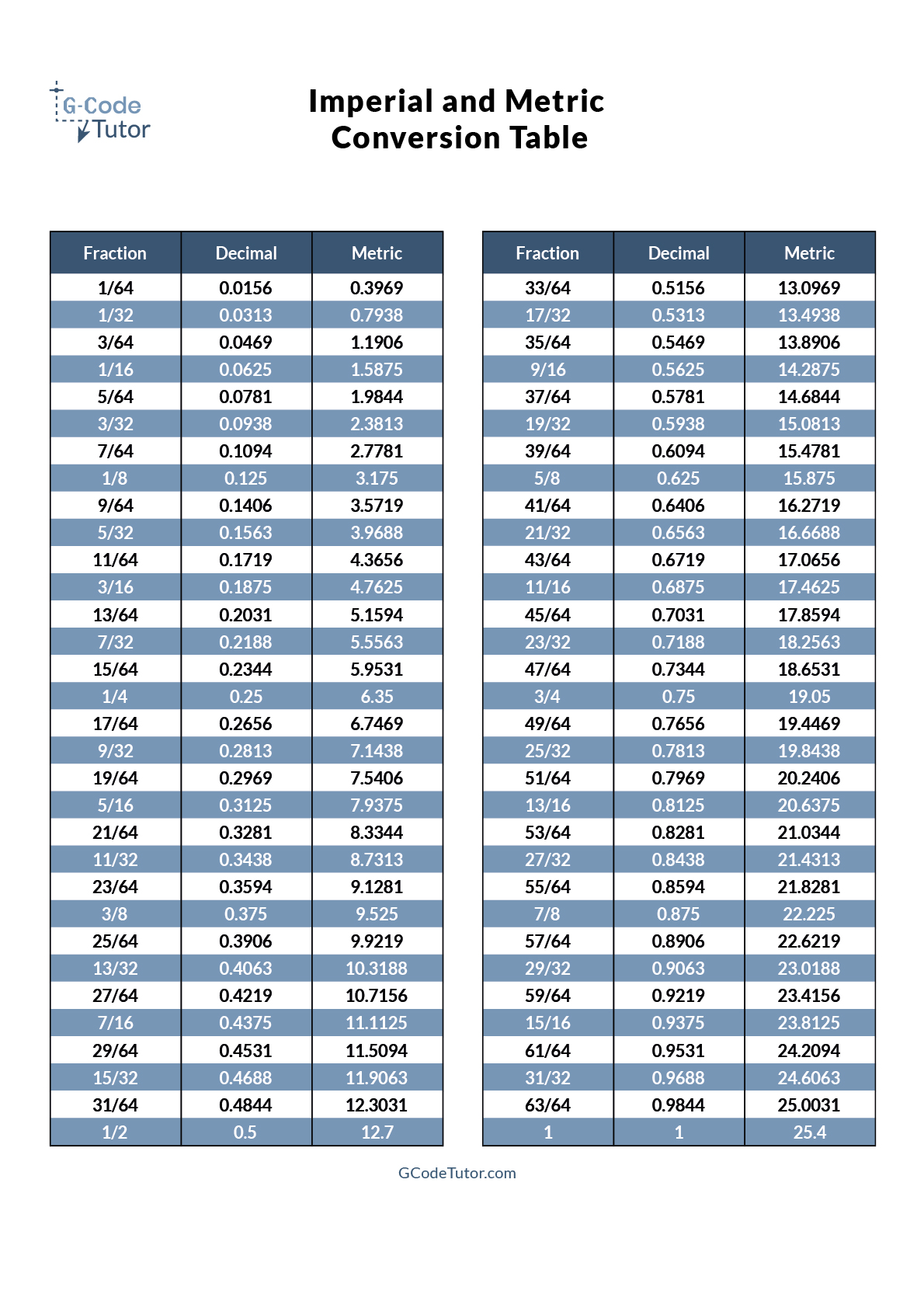Visualising Imperial or Metric Dimensions
As machinists, we are often taught to work in either imperial or metric. Many machine shops and factories require us to work in both. Often workplaces take on contract work from other countries, for example, you might be working in America but your company has taken on contract work from Europe. In this article, I will show you some tips and tricks on how we can get used to thinking in metric if you are used to working in imperial, or vice versa.
How to accurately convert imperial to metric.

1 inch is equal to 25.4mm.
By remembering how many millimeters are in 1 inch, we can easily and accurately convert between the two measurement systems by using this number.
To convert from imperial to metric we simply multiply by 25.4
To convert metric to imperial we divide by 25.4
So for example, if we have 1/4 of an inch, or 0.250" in decimal, we multiply 0.250 by 25.4 and it returns 6.35mm.
Using the same example, 6.35mm divided by 25.4 is equal to 0.250"
25.4 is all we need to remember to convert accurately with a calculator
Visualising metric dimensions

In engineering, we need to accurately know how to convert between metric and imperial, but to be able to 'see' the size in our heads we don't need to be as accurate. We can round up, making the numbers much easier to remember.
If we mainly work in imperial, after a while we get used to seeing how long one inch is, and we can imagine the size in our heads. We can see a length and say "that is roughly one inch"
We know that 1 inch is roughly 25mm so when we see something and estimate that it is 1 inch, we now know that it is also roughly 25mm.
To quickly get used to working in metric, we can remember 7 different sizes and their rough metric equivalents and this helps us see the sizes. Then we simply add them together to give us a full range of quick conversions that we can do in our heads.
Of course, these are not accurate measurements, and for that, we need to use the conversion that I spoke about above, but it is a great way to train our brains to think in metric if we are used to imperial or vice versa.
Download this rough unit conversion chart above and memorise these 7 sizes. Once we have locked these in our brains we can add them together to get a rough estimate of any size we need. For example, 1.5 inches we know is roughly 25mm + 13mm. So we can now estimate that it is around 38mm.
And if you mainly work in metric, it works the other way too.
I originally learnt imperial before metric, this is the way I taught myself to quickly convert between the two. Everyone learns differently, but for me at least, this is how I cracked the problem of visualising metric dimensions.
Conversion chart
I have also made a conversion chart that you can download and print to stick on the inside of your toolbox or on a wall to help you remember at a glance. Just right-click and save to keep this chart.

Share this article
To learn more about machine shop maths:
8-hour pre-recorded machine shop maths course



